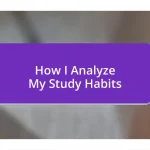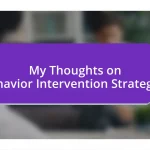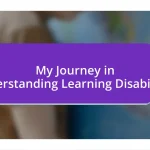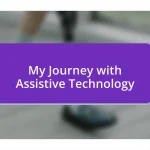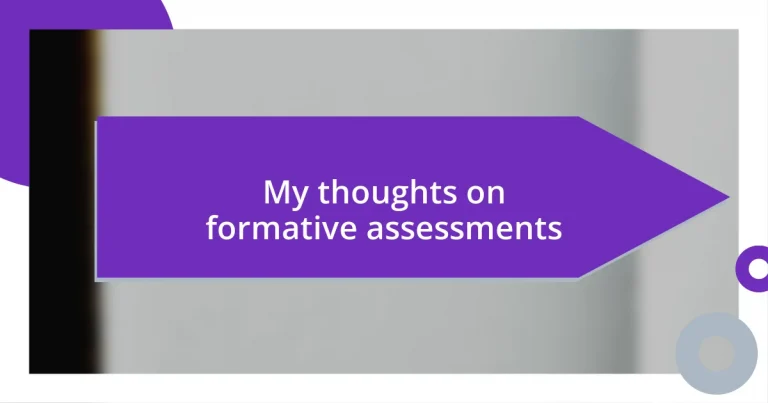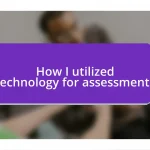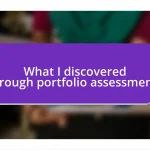Key takeaways:
- Formative assessments facilitate real-time feedback and tailored instruction, promoting a growth mindset and enhancing student engagement throughout the learning process.
- Effective strategies for implementation include peer assessments, low-stakes quizzes, and the integration of technology to provide immediate feedback and foster collaboration.
- Future trends in formative assessments highlight the role of technology, student-led assessments, and the importance of social-emotional learning in creating a supportive educational environment.
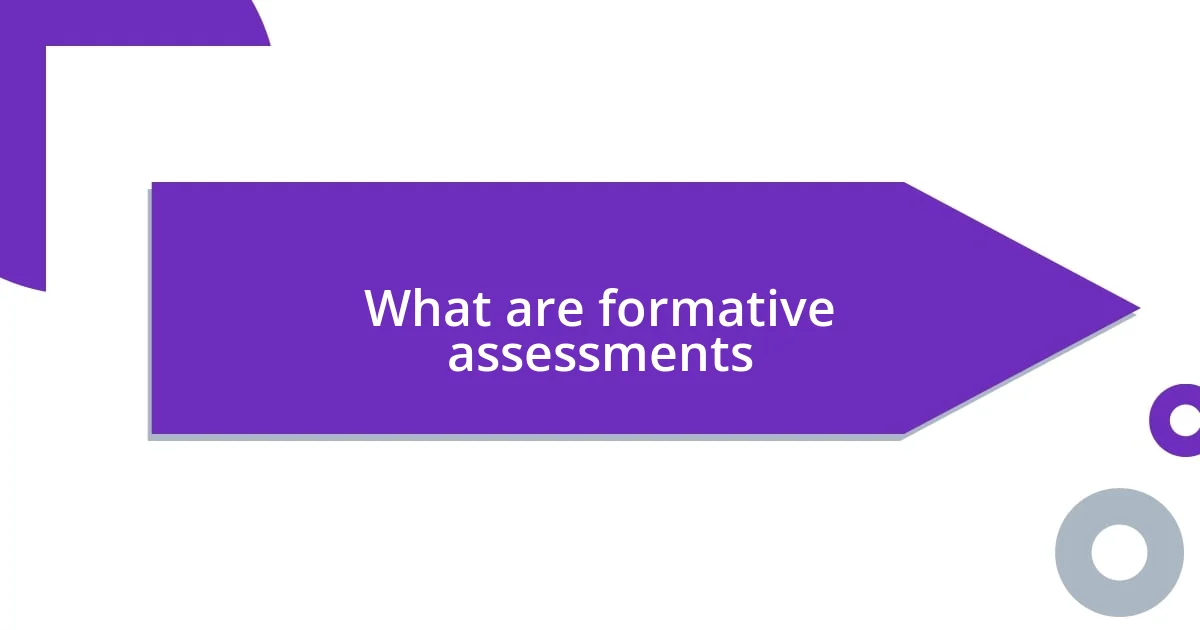
What are formative assessments
Formative assessments are tools that teachers use to gauge student understanding throughout the learning process. They might take the form of quizzes, group discussions, or even simple thumbs-up/thumbs-down signals. I remember a time in one of my classes when we used quick exit tickets, and I could see how effective they were in shaping our next lesson.
These assessments help inform instruction, allowing educators to adjust their teaching strategies based on what students need. For instance, after noticing a pattern of misunderstanding in my students’ responses, I was able to readdress key concepts in a more engaging way. Have you ever found that your plans changed dramatically based on a simple question from a student? It can be eye-opening to realize how much insight we can gain from ongoing assessments.
Importantly, formative assessments focus on the process of learning, not just the final outcomes. They encourage a growth mindset, promoting the idea that mistakes are opportunities for growth. In my experience, when I fostered an environment where students felt safe to express confusion, it sparked deeper discussions and enhanced learning. Isn’t it incredible how a little feedback can go such a long way?
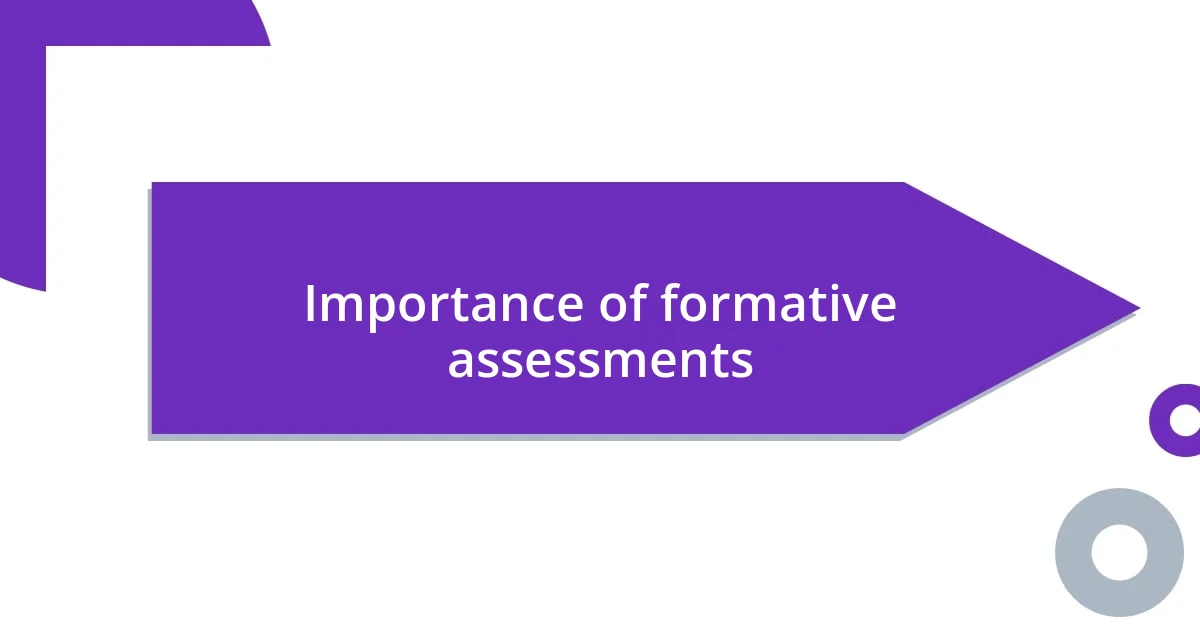
Importance of formative assessments
Formative assessments are crucial for tailoring instruction to meet students’ unique needs. I can recall a project where my students struggled with a particular math concept. After a quick, informal assessment, I realized they were missing a foundational understanding. This insight allowed me to pivot my approach, leading to a more supportive learning environment where students felt comfortable asking questions and clarifying their misunderstandings.
The beauty of formative assessments lies in their ability to promote continuous improvement. They create a loop of feedback that is both effective and motivating. Here are some key reasons that highlight their importance:
- Real-time feedback: Helps both teachers and students gauge progress immediately.
- Enhanced engagement: Keeps students active in their learning journey.
- Tailored instruction: Allows educators to adapt lessons based on learner needs.
- Encouragement of a growth mindset: Reinforces the idea that learning is a process filled with opportunities for improvement.
- Promotion of self-reflection: Encourages students to think critically about their own learning experiences.
Reflecting on it, I love how formative assessments transform my lessons into a dialogue with my students rather than a one-sided lecture. They’re not just about grades; they’re about growth— and that makes all the difference.
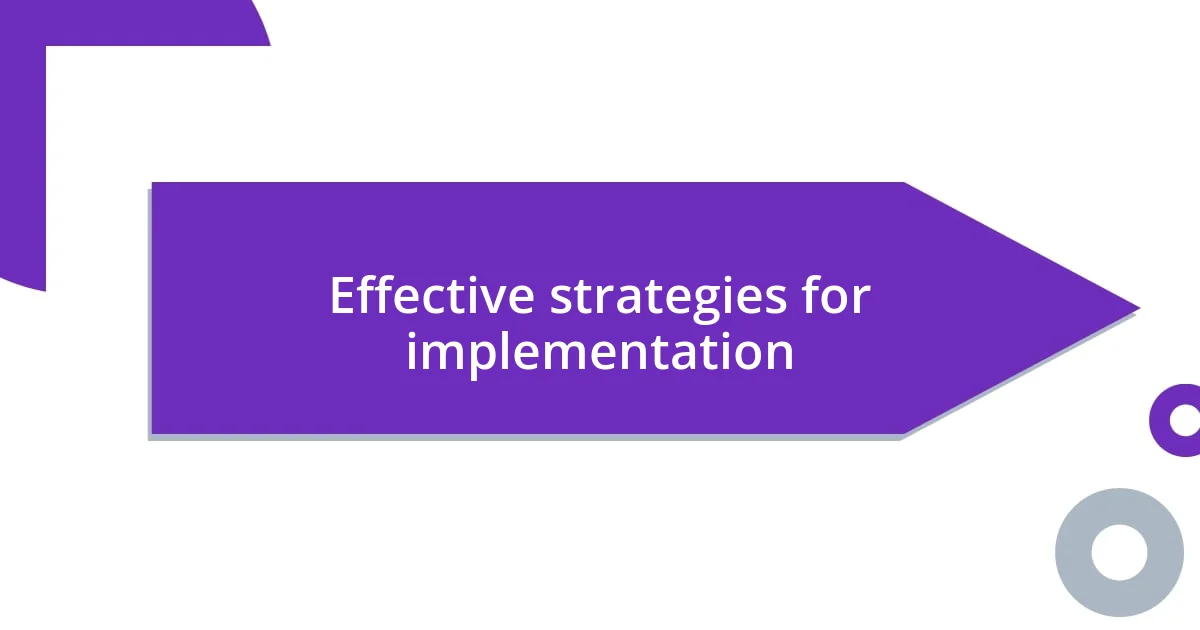
Effective strategies for implementation
Implementing effective formative assessments requires thoughtful planning and creativity. One strategy I’ve found useful is incorporating peer assessments into group work. This not only encourages collaboration but also empowers students to take ownership of their learning. I once assigned a project where students evaluated each other’s presentations, and the discussions that arose from their feedback were incredible—students often recognized insights that I hadn’t even considered.
Another effective strategy is the use of frequent, low-stakes quizzes to check understanding. I often create quick, fun quizzes that serve as both a review and an assessment tool. In a recent class, I used a Kahoot! quiz after a unit, and the energy in the room was palpable. Students actively engaged with the content, and the immediate feedback helped me identify who needed extra help and who was ready to move on. Have you ever seen students light up when they realize they know the answers? It’s such an empowering moment for them.
Lastly, utilizing technology can streamline the assessment process and provide instant feedback. Apps like Google Forms allow for quick surveys and reflections, enabling students to share their thoughts anonymously. I remember using this during a particularly challenging unit, which gave me invaluable insights into my students’ struggles. It changed how I approached the next lesson, and their enthusiasm was evident when they realized their voices were heard.
| Strategy | Description |
|---|---|
| Peer Assessments | Encourages collaboration and ownership by letting students evaluate each other. |
| Low-Stakes Quizzes | Fun, frequent quizzes that review content and check for understanding, boosting engagement. |
| Technology Integration | Using apps for quick surveys and feedback, allowing for anonymous student reflections. |
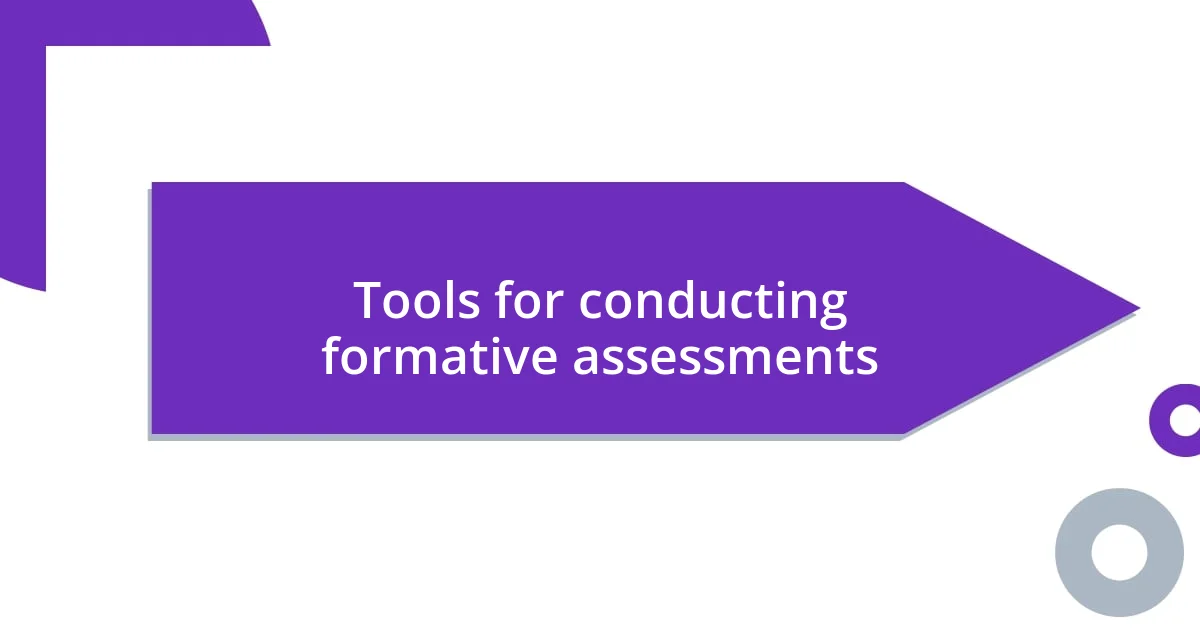
Tools for conducting formative assessments
When it comes to tools for conducting formative assessments, I’ve found that variety can be incredibly beneficial. Digital platforms, like Edpuzzle, allow me to create interactive video lessons. Once, while using Edpuzzle to guide my students through a complex science topic, I noticed how their engagement skyrocketed. They could pause, answer embedded questions, and even rewatch sections, which reinforced their understanding in real time. Isn’t it fascinating how technology can transform passive watching into active learning?
Another tool I love is the whiteboard—even the traditional kind. During a recent lesson, I used mini whiteboards for a quick check-in on students’ understanding of a math problem. Seeing them eagerly hold up their answers was a rewarding experience. The immediacy of visual feedback helped me identify gaps and adjust my teaching on the spot. Have you ever witnessed such rapid shifts in comprehension through this kind of simple tool?
Lastly, I cannot underestimate the power of open-ended questions during class discussions. I often pose reflective questions to my students, allowing them to express themselves freely. In a recent group discussion, asking “How do you think this concept applies to our lives?” sparked a lively exchange filled with personal stories that connected their learning to real-world situations. It’s amazing how a simple prompt can uncover deep insights and perspectives. How do you leverage discussions to deepen understanding in your classroom?
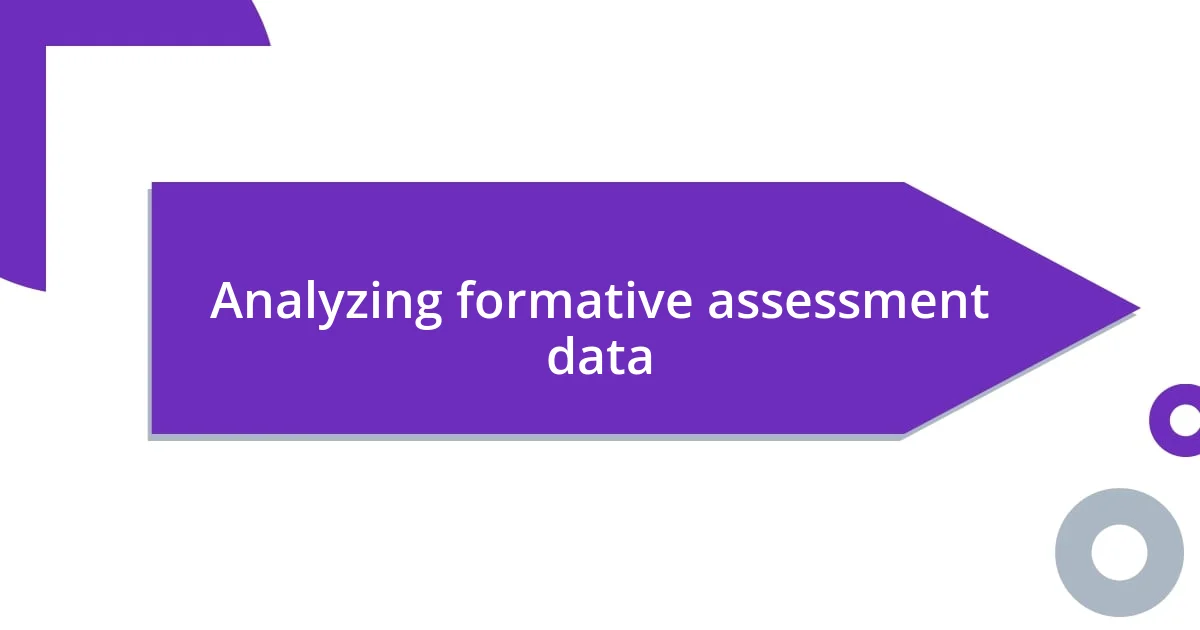
Analyzing formative assessment data
Analyzing formative assessment data is crucial for tailoring instruction to meet students’ needs effectively. One experience that stands out to me is when I meticulously reviewed quiz results from a recent unit. I noticed a surprising number of students struggled with a particular concept. Their responses revealed not just gaps in knowledge, but misconceptions that I hadn’t anticipated. It was eye-opening to realize that this analysis would directly inform how I adjusted my teaching strategies moving forward.
In my practice, I often use visual data representation to make sense of formative assessment results. For instance, after a series of exit tickets, I created a simple chart to categorize student responses. This visual approach clarified which areas needed more attention and facilitated more targeted discussions in the classroom. Have you ever noticed how seeing data visually can spark new ideas and insights? It certainly helps me understand broader trends and individual student needs at a glance.
Another valuable method I employ is grouping students based on their formative assessment results. When I separated students into small groups according to their strengths and weaknesses, I was amazed at the transformation in their engagement. One group, which initially struggled, thrived as they worked collaboratively on targeted activities designed for their learning gaps. Witnessing students who once felt lost become more confident was incredibly rewarding. How often do we overlook the potential of data to not just inform our teaching, but to empower our students as well?
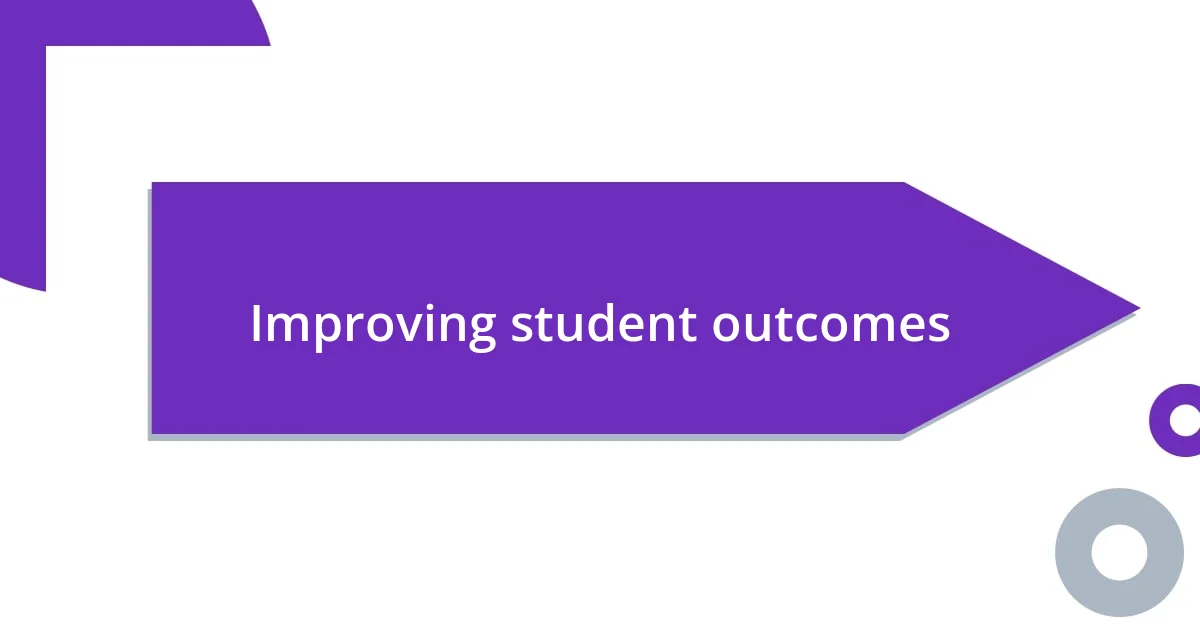
Improving student outcomes
Improving student outcomes often hinges on my ability to tailor instruction based on individual needs. I remember a specific moment when a student who was usually quiet raised their hand after I adjusted my lesson based on formative assessments. Their understanding blossomed, and that connection sparked my curiosity about how small changes could lead to profound learning experiences. Isn’t it incredible how one insight can unlock a student’s potential?
In another instance, I integrated peer assessments into my classroom. Students provided feedback on each other’s work after completing short writing assignments. Initially, I wasn’t sure how they would receive this responsibility, but watching their enthusiasm unfold was a revelation. They took ownership of their learning, asking insightful questions about their peers’ work. How often do we underestimate the power of collaboration in enhancing understanding?
Additionally, I’ve found that timely feedback can dramatically influence student motivation. There was a time when I made it a point to provide feedback within a day of an assessment. The improvement in my students’ confidence was palpable. Seeing them eager to implement my suggestions in their next assignment was a true testament to the impact immediate responses can have. Have you ever noticed how quickly students can transform with the right guidance at the right moment?
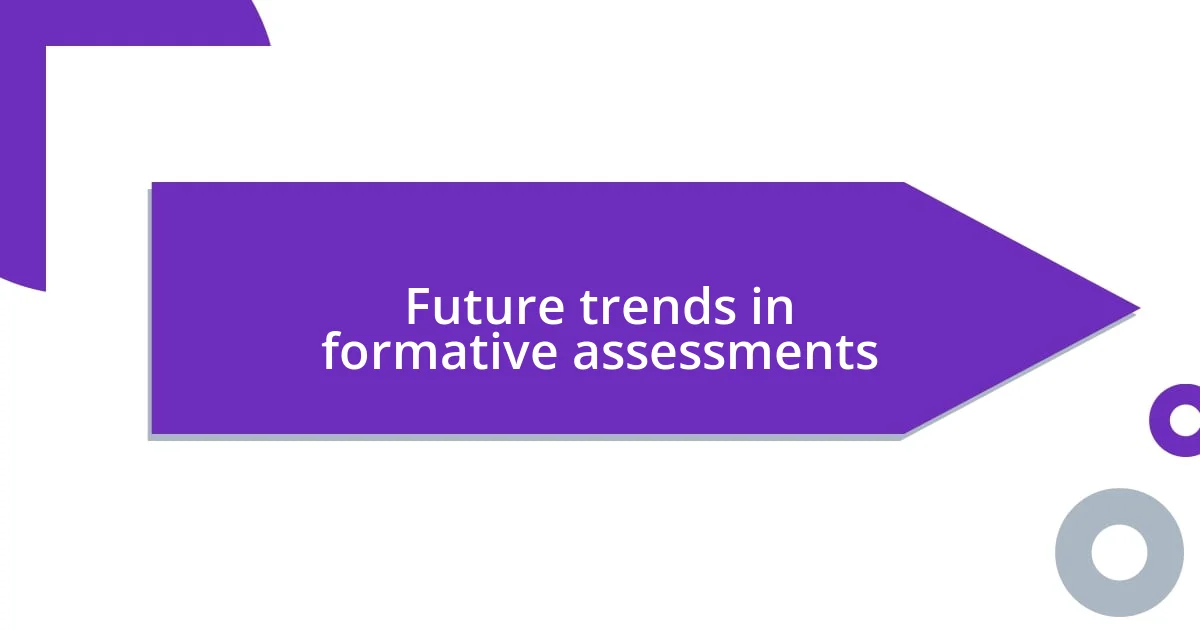
Future trends in formative assessments
As I look ahead at the trends shaping formative assessments, it’s clear that technology will play an ever-growing role. I recently experimented with an online platform that provided immediate feedback on student responses, and the excitement in my classroom was palpable. Students reveled in the instant gratification of knowing where they stood, igniting a self-driven desire to improve. Isn’t it fascinating how technology can amplify student engagement in ways we might not have imagined before?
Another evolving aspect is the shift towards student-led assessments. I’ve found that when students actively participate in creating their own assessments, ownership of their learning increases significantly. One day, I asked my students to design a quiz based on what they felt were the most important concepts from our recent unit. The thoughtfulness in their questions was astounding, and it compelled them to reflect on their own understanding. Have you tried a similar approach? It truly transforms the learning dynamic when students shape their evaluations.
Lastly, there’s a burgeoning emphasis on social-emotional learning (SEL) in formative assessments. As educators, we often focus on academic metrics, but I’ve started integrating emotional check-ins alongside traditional assessments. One touching moment occurred when a student shared their anxiety about upcoming projects through a simple feedback form. By acknowledging these feelings, we could work together to create a supportive environment, where both academic and emotional growth are prioritized. How often do we consider the emotional landscape of our students when assessing their progress?
